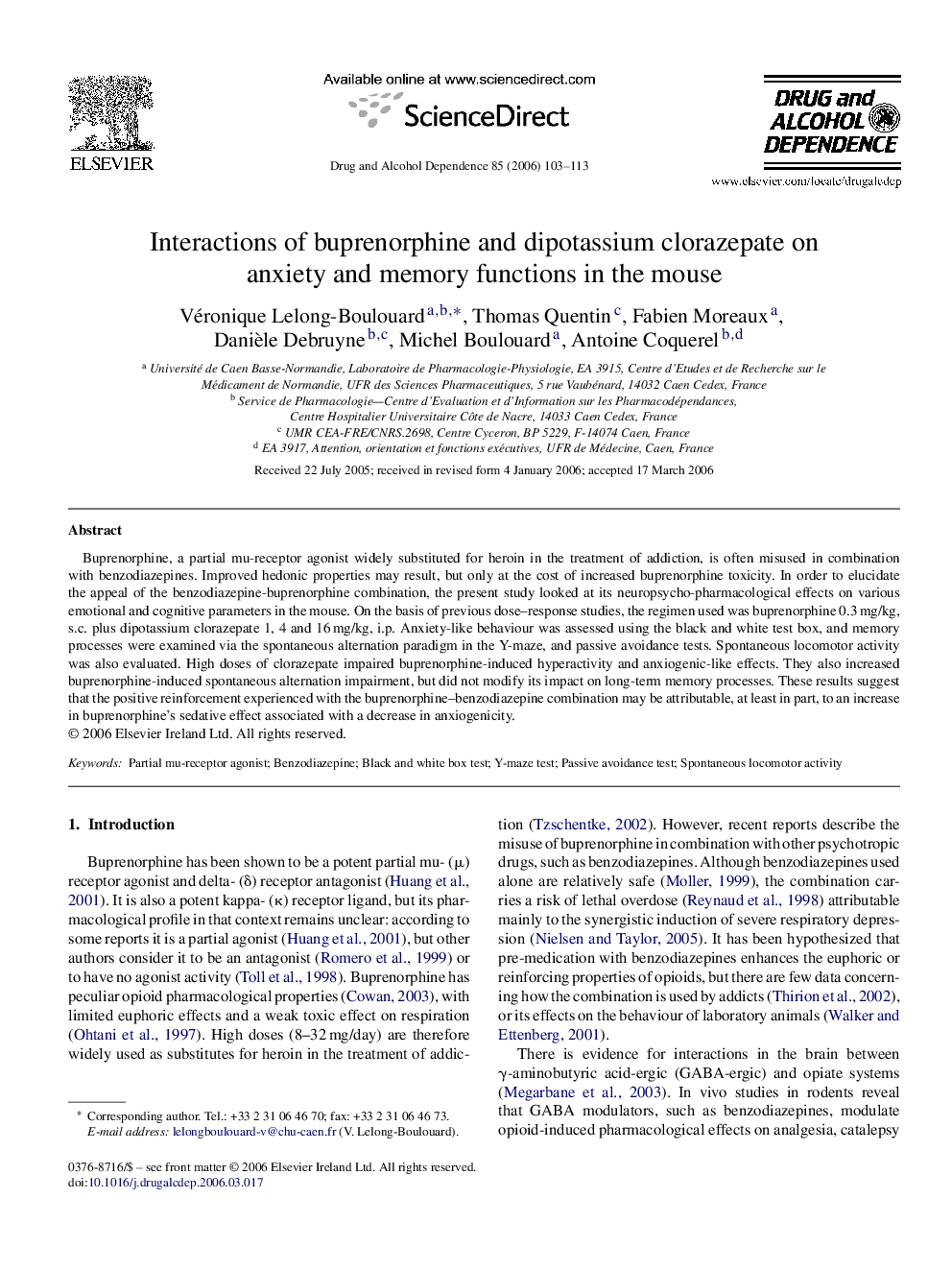| Article ID | Journal | Published Year | Pages | File Type |
|---|---|---|---|---|
| 1071405 | Drug and Alcohol Dependence | 2006 | 11 Pages |
Buprenorphine, a partial mu-receptor agonist widely substituted for heroin in the treatment of addiction, is often misused in combination with benzodiazepines. Improved hedonic properties may result, but only at the cost of increased buprenorphine toxicity. In order to elucidate the appeal of the benzodiazepine-buprenorphine combination, the present study looked at its neuropsycho-pharmacological effects on various emotional and cognitive parameters in the mouse. On the basis of previous dose–response studies, the regimen used was buprenorphine 0.3 mg/kg, s.c. plus dipotassium clorazepate 1, 4 and 16 mg/kg, i.p. Anxiety-like behaviour was assessed using the black and white test box, and memory processes were examined via the spontaneous alternation paradigm in the Y-maze, and passive avoidance tests. Spontaneous locomotor activity was also evaluated. High doses of clorazepate impaired buprenorphine-induced hyperactivity and anxiogenic-like effects. They also increased buprenorphine-induced spontaneous alternation impairment, but did not modify its impact on long-term memory processes. These results suggest that the positive reinforcement experienced with the buprenorphine–benzodiazepine combination may be attributable, at least in part, to an increase in buprenorphine's sedative effect associated with a decrease in anxiogenicity.
